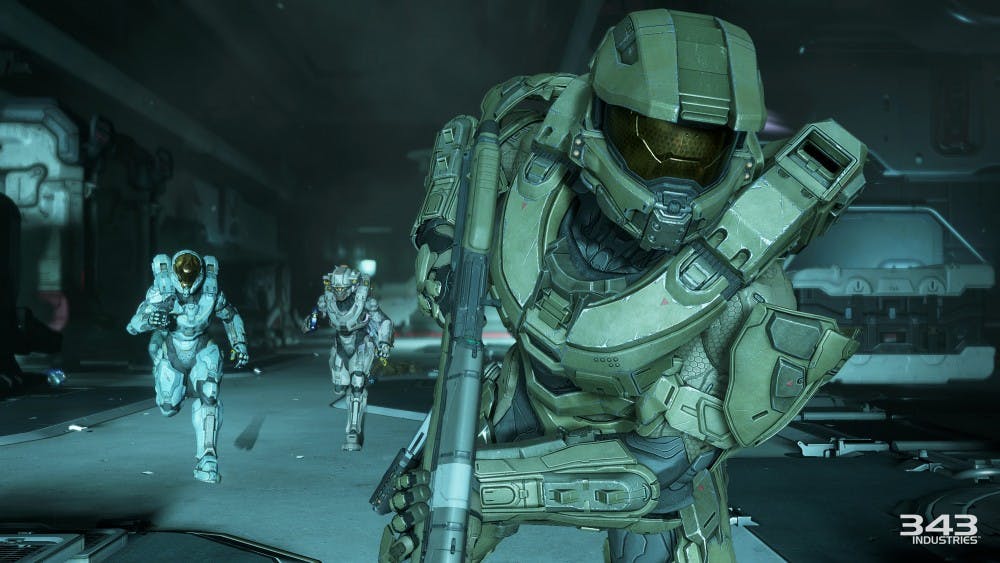October 27, 2015, saw the release of “Halo 5: Guardians” – Microsoft’s pièce de résistance of the purported “Greatest Games Lineup in Xbox History,” With the franchise’s history of selling consoles — “Halo: Combat Evolved” single-handedly carried the original Xbox against the PlayStation 2, and “Halo 3” single handedly moved hundreds of thousands of Xbox 360s — Microsoft is banking on this game selling well. For our generation, many an evening was spent playing four person split-screen co-op or multiplayer with our friends. These are the memories that defined Halo.
In the intervening years, however, Halo changed. The split screen is gone in “Guardians,” a victim of the uncompromising 60 frames per second framerate and focus on four-player online co-op. Longtime series developer Bungie announced in 2010 that they no longer would work for Microsoft and decided to work on their own game — “Destiny,” which launched in 2014 — leading Microsoft to form first party studio 343 Industries exclusively to handle Halo.
The divisive status of “Halo 4” and the unbelievably broken mess that was the multiplayer in “Halo: The Master Chief Collection” did not endear the new studio to the famously uncompromising Halo fanbase. Adding to that pressure, Microsoft needs to have a blowout Christmas 2015 in terms of console sales. With competitor Sony’s first party lineup paltry by comparison, Microsoft knew it was do-or-die time for the Xbox One.
To win over the Halo fanbase, Microsoft unleashed a slick viral marketing campaign titled #huntthetruth. Series protagonist Master Chief had supposedly gone AWOL, with newcomer from the Halo Expanded Universe Spartan Locke sent to track him down. Podcasts, literature, competing trailers, and even the game’s own cover art pitting the Chief and Locke against one another posited the tantalizing conflict between the venerable the Chief doing what is right and the rookie Locke following his orders.
Unfortunately, the product that arrived on people’s Xbox Ones and in stores last Tuesday was far from what was promised. Though Locke and the Chief share equal billing in advertising and on the cover, 343 apparently decided Locke’s side of the story was far more interesting and has the player take control of him for roughly 80 percent of the single player campaign. The Chief takes the remaining 20 percent of the playtime. The climactic battle teased by the marketing campaign plays out in a single cutscene, and the game ends on a disappointing cliffhanger that sets up Halo 6 more than it provides closure.
It is clear that Microsoft and 343 Industries seem intent on transitioning Halo away from a one Spartan show and delving deeper into the expanded universe beyond the base games. That does not mitigate the fact that more casual fans will be left out in the cold wishing to play as Master Chief.
This is not the first time a highly anticipated sequel has switched protagonists and ended so confusingly. Other games, such as “Metal Gear Solid 2: Sons of Liberty” and “Spec Ops: The Line,” suffered nearly immediate fan backlash for false advertisement, wholesale deception and misleading marketing. History has been kind to these games because of their goals of being hard hitting deconstructions of sequels and military shooters, respectively, and that philosophy extended to their marketing campaigns. However, “Halo 5” does not have such lofty artistic ambitions. To make matters worse, the series made the same mistake eleven years ago. “Halo 2” suffered from the same problem. The main character bait-and-switch with the Arbiter was not even foreshadowed by any promotional materials and an obviously rushed ending.
While this whole controversy should not reflect on the technical merits of this game, which are commendable, and the reportedly excellent multiplayer, the sad truth of the matter is that this will continue to be a problem for the foreseeable future. As game development budgets skyrocket and sales targets continue to increase, the premium on grandiose marketing will not diminish. The only hope is these tricks are called out in advance and videogame publishers know how to toe the fine line between avoiding spoilers and outright misdirection.




